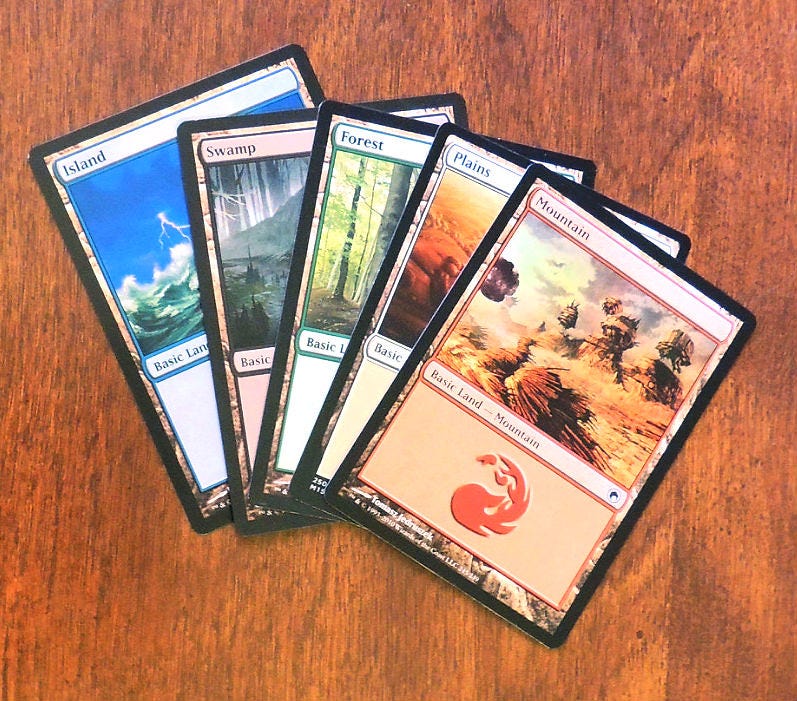Roguelike Branches and Single Player Metagames
Branching Systems and Building Decks
I stopped playing Magic: The Gathering because the fun of building decks disappeared. Magic is ostensibly a game about putting together the most optimal set of 60 cards to do battle against an opponent. It’s supposed to be a combination of ideas and tactics. Figuring out the best way to combine the cards you had into an optimal strategy and then deploying it against your opponent in pitched battle is fun.
The reality, by the end of my playing experience, was much different. Slight inconsistencies in the power level of cards combined with the existence of the internet meant that, for the most part games were played out over very minute tweaks to mostly settled decklists. This can certainly be fun, but it’s a far cry from the clash of ideas that Magic sold itself on.
I ended up giving up because the idea behind the game didn’t match up with the play experience I actually had.
Enter the Deckbuilders
When deckbuilding came along, in the form of games like Dominion they promised to change this by making the game about building your deck as you go. And digital games followed, with the emergence of Slay the Spire as the dominant tactical deckbuilding roguelike. Slay the Spire is a game that combines deckbuilding, computerization and dynamic gameplay to incredible effect.
But the metagame, how these experiences get stitched together, often gets overlooked in single player deckbuilders. Because, well, it’s not the game.
But a recent release, Die in the Dungeon has me thinking about how and why the metagame is so important.
For Die in the Dungeon, "the game" is a tactical strategy game about placing different 4, 6, or 8 sided dice in relationship to each other to maximize attack, healing, and defense to defeat opponents.
The game, each battle, is really solid. It eschews the complexity of other Slay the Spire style games by using simple dice that do simple actions.
And after each fight, just like Slay the Spire, there’s a branching path for you to take, offering a variety of options on your journey.
Unlike Slay the Spire, there are… a lot of options. So many options in fact, that it gets hard to understand exactly what optimal even looks like. So many options that it had me questioning whether or not branching paths are the optimal metagame.
While I was playing a bunch of games in the Next Fest, it started to feel like many games defaulted to these branching experiences which created an experience that felt decoupled and disconnected from the “real game”.
Where We Came From
Branching paths have existed in video games since what feels like time immemorial. Even before tactical roguelikes (like FTL or Slay the Spire) existed, PC games like Civilization or Age of Empires1 were using branching trees to shape players' experiences and give choices meaning. And roleplaying games like Dungeons and Dragons use them to shape what powers are accessible to the characters you make.
The rough idea of branching paths is it forces decision making. From an "evolution tree" perspective, when you pick a certain path you are forgoing other pathways. If you want to improve diplomacy you have to move down that path instead of military, for example.
But these evolution or choice paths don't map perfectly onto roguelike style games. Roguelike paths are generated programmatically from one of a few options like rest, enemy encounters, and events.
For a game like Slay the Spire, these branching paths represent skill evolution. As you start out you might spend a lot of time stopping at rest camps to regenerate. This denies you resources you will need later, but as you grow in skill you can forgo those rests to pick up valuable resources to tune your deck or so on.
In FTL this happens on two levels. You're jumping to various planets within a system, which is much more freeform, only constrained by how close the various planets are. And at a system level, you jump between branches, but there are only a few choices, basically between safer, more dangerous, or more unknown space.
Branching Paths are The Metagame
These pathways can seem like add-ons, ways to shape the experience with variety so that players don’t get bored. But the actually serve a deeper purpose, they define the metagame for the player. The branching decisions (typically leading up to a final boss), shape what moves are possible.
In FTL this looks like a starmap, communicating the idea of non-linear exploration, encouraging you to jump around and explore.
In Shogun Showdown the game communicates rival clan territories you are navigating through, offering simple choices about the style of deck you would like to create.
In each of these games, the overworld defines the style and shape of the experience the game wants you to have, and ultimately how much replayability you’ll get out of it. The branches are a helpful way to create forward momentum while also constraining what’s available to the player.
But are they the only way…?
Next week I’m going to dig into the other options and some of the benefits and challenges that come with each of them.
As an aside, these tech trees have so much nerd cultural resonance that there’s a somewhat popular board game that’s basically a competitive tech tree, called Beyond the Sun. The idea of visualizing constrained choices is a powerful one.







